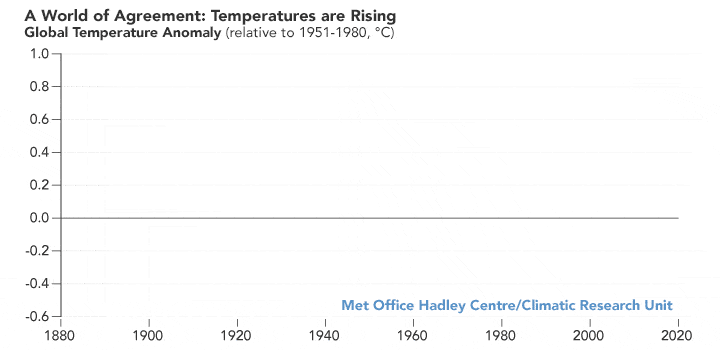
By now it should be no surprise to learn that the planet is warming very rapidly. The vast majority of this warming is not natural, over 99% of scientists say, but rather the result of heat-trapping greenhouse gases released by human activity such as burning fossil fuels.
Yet with all the thousands of studies about climate change and its connection with human activity, it was only recently that researchers at NASA have provided direct observations of the driving force of climate change.
Since the Industrial Revolution in the mid-19th century when humans’ appetite for coal and other fossil fuels was first stirred, the concentration of CO2 in the atmosphere has skyrocketed from 280 parts per million (ppm) to over 415 ppm today.
We know beyond a doubt that greenhouse gases such as CO2, methane, or water vapor trap heat in the atmosphere, thereby raising surface temperatures. We also know that CO2 in the atmosphere is increasing at a pace 100 times faster than it should naturally.
At the same time, human activity is also responsible for air pollution, such as particulate matter that we all know is detrimental to our health, as well as that of wildlife. But some of this air pollution is in the form of aerosols, which are minute particles suspended in the atmosphere where they reflect incoming sunlight back into space. In other words, this kind of pollution has a global cooling effect.
Aerosols are thus a force of cooling, whereas greenhouse gases produce heating. The difference between the energy absorbed by the atmosphere, of which greenhouse gases are a major contributing factor, and the energy radiated back to space by factors such as aerosols is known as “radiative forcing”.
When radiative forcing is zero, this means that the planet’s energy system is in balance, so the atmosphere shouldn’t warm nor should it cool. When radiative forcing is positive, this means that Earth’s system is off balance and warming.
What NASA has done in its recent study is to quantify the individual radiative forcings using satellite observations in order to determine exactly how much each component warms or cools the planet.

For decades, scientists have devised models of climate change predicting how the temperature will change as a function of greenhouse gases in the atmosphere. Unsurprisingly, the new NASA study found that radiative forces match these models after it combined data from NASA’s Clouds and the Earth’s Radiant Energy System (CERES), which studies the flow of radiation at the top of Earth’s atmosphere, with other data sources such as ocean heat measurements.
“This is the first calculation of the total radiative forcing of Earth using global observations, accounting for the effects of aerosols and greenhouse gases,” said Ryan Kramer, first author on the paper and a researcher at NASA’s Goddard Space Flight Center in Greenbelt, Maryland, and the University of Maryland, Baltimore County. “It’s direct evidence that human activities are causing changes to Earth’s energy budget.”
Another nail in the coffin
Scientists unanimously agree that human activity is the only thing that can explain the steep rise in the average global temperature on Earth, which has increased by a little more than 1° Celsius (2° Fahrenheit) since 1880. Two-thirds of the warming has occurred since 1975, at a rate of roughly 0.15-0.20°C per decade.

Although the evidence for anthropogenic global warming is overwhelming, this was actually the first study to present direct rather than indirect evidence in favor of this explanation for the warming we’re currently experiencing. Up until now, direct evidence that changes in greenhouse gases affect the atmosphere’s ability to transfer heat was only available in localized settings.
According to the study, human activities have caused radiative forcing on Earth to increase by about 0.5 Watts/square meter between 2003 to 2018.
“Creating a direct record of radiative forcing calculated from observations will allow us to evaluate how well climate models can simulate these forcings,” said Gavin Schmidt, director of NASA’s Goddard Institute of Space Studies (GISS) in New York City. “This will allow us to make more confident projections about how the climate will change in the future.”
The findings appeared in the journal Geophysical Research Letters.






